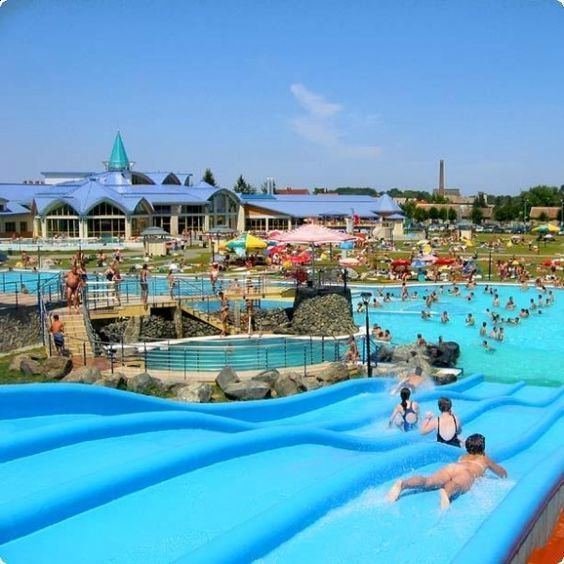Country Hungary Time zone CET (UTC+1) Area code(s) 95 Local time Tuesday 7:24 AM | County Vas Postal code 9600, 9609 Area 64.64 km² | |
 | ||
Weather 8°C, Wind N at 13 km/h, 79% Humidity Points of interest Sárvár Castle, Sárvár Arboretum, Ferenc Nádasdy Museum, Cukorgyári Kastély | ||
Sárvár (German: Kotenburg, Rotenturm an der Raab, Slovene: Mala Sela) is a town in Hungary in Vas.
Contents
- Map of SC3A1rvC3A1r Hungary
- Etymology
- Castle
- Town
- People from Srvr
- British avian flu outbreak
- Twin towns Sister cities
- References
Map of S%C3%A1rv%C3%A1r, Hungary
Etymology
Sár means "mud" in Hungarian, and vár means "castle". The latter is a common ending for settlement names.
Castle
Through the Nádasdy family, the castle of Sárvár, now called Nádasdy Castle, played a significant role in the progress of Hungarian culture in the 16th and 17th centuries. The first Hungarian book, The New Testament of 1541, was printed here. The knight's hall of the castle is decorated with the battle scenes of Lord Chief Justice Ferenc Nádasdy (married to the notorious Elizabeth Báthory) and with scenes from the Old Testament.
The Nádasdy Castle and estate later became a property of the kings of Bavaria, and the former King Ludwig III died there in 1921, three years after being deposed. During the Second World War, the castle was used as the retreat of Ludwig's grandson Prince Albert of Bavaria.
Town
The population of the town lying on the banks of the River Rába at Kemeneshát is nearly 16,000. The town has become a tourist centre of international renown.
The most outstanding sights include: the arboretum (a nature reserve), the neo-Classical Lutheran church and the Roman Catholic church, the park forest and the Csónakázó (= Rowing) Lake. A new Thermal and Wellness bath of European standard was opened in 2002 awaiting visitors in pleasant surroundings.
Sárvár's notable sights include the spa (with its famous medicinal water), a Baroque church, and an arboretum. A number of rarities of cultural remains are shown in the exhibition halls of the Ferenc Nádasdy Museum.
In 1564 András Beythe (botanist) was born in Sárvár.
During the Second World War, Sárvár was used as a centre for the internment for Polish soldiers who had arrived in Hungary in 1939. Later, during the Second World War, Sárvár was used as a concentration camp for the internment for thousands of Serb families expelled by Hungarian soldiers from their homes in northern Serbia in 1941. Now, there is a monument and graveyard for hundreds of Serbs who died in Sárvár concentration camp.
People from Sárvár
British avian flu outbreak
The Bernard Matthews Sága Foods plant in Sárvár, that processes turkeys, has been implicated in the H5N1 outbreak in Suffolk, England.
Twin towns — Sister cities
Sárvár is twinned with:
